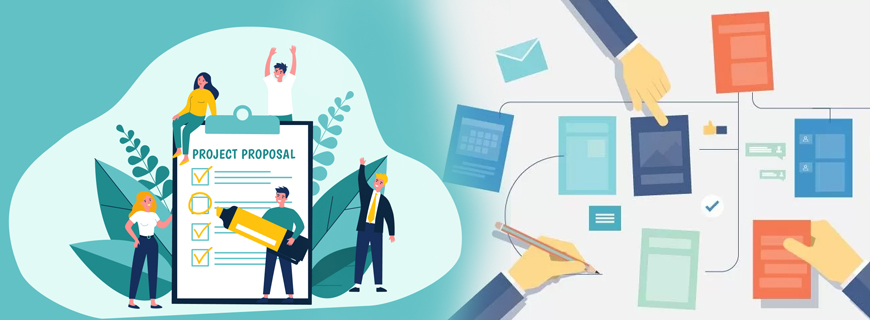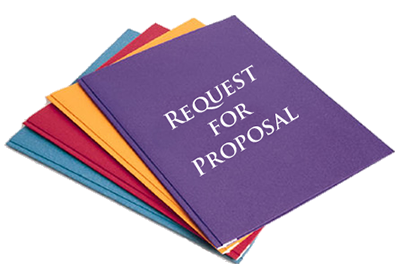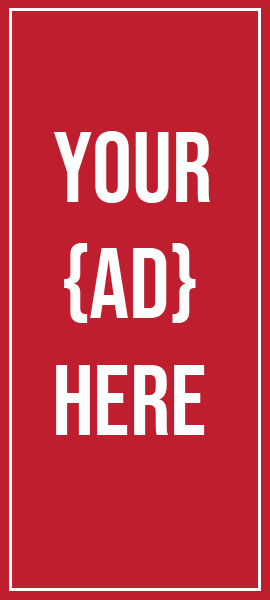
Proposals
To be persuasive we must be believable; to be believable we must be credible; to be credible we must be truthful.
– Edward R. Murrow
Introduction
We are expected to provide a positive image in all of our encounters, not only those that take place face to face. The same principle applies to written communication, and it is especially important to keep this in mind while putting together a proposal for a business. In this lesson, we will go over the fundamental components of a proposal, including how to choose a format for the proposal, as well as some helpful hints for composing one.
A proposal is essentially a sales presentation for a good or service that your organization is willing to provide to potential customers. It describes a challenge or an opportunity that the customer is facing and then offers a product or service as a potential solution to that challenge or opportunity.
The Basic Structure
A business proposal is an unsolicited or solicited bid for the business. A proposal is usually written to another company or institution. Companies can also require their local departments to write proposals when suggesting solutions to upper management.
At its very basic level, a business proposal answers two things: what the other party needs, and how your company can address this need.

A business proposal is an unsolicited or solicited bid for the business. A proposal is usually written to another company or institution. Companies can also require their local departments to write proposals when suggesting solutions to upper management.
At its very basic level, a business proposal answers two things: what the other party needs, and how your company can address this need.
The following is the basic structure of a business proposal:
- Company Overview
- Statement of the Problem (also referred to as the Need Statement)
- Background and Benefits (mostly used for unsolicited proposals)
- Scope of Services/ Deliverables
- What
- Who
- When
- Where
- How
- How much
- Contact Details
- References
Below is a sample business proposal.
NOTE: This sample is just a basic draft for the purpose of illustration. The succeeding section gives more information on business proposal formats.
Company Overview
Linkages International is South Carolina’s fastest-growing technical support company. In our three years of service, we have provided customer assistance for 27 multinational companies, 6 of which are on the Fortune 500 list.
Statement of the Problem
The credibility of many online industries depends on how fast and how efficiently they can respond to telephone calls and email messages. Without an actual physical location that customers can go to for inquiries, assistance, and complaints, telephone, and email assume the role of the company’s physical presence. The lack of a top-of-the-line customer support system for phone and email communication can seriously affect your business’s bottom line!
Scope of Services/ Deliverables
- What?24 hour customer assistance via telephone and email.
- Who?Trained and qualified customer service representatives will answer all inquiries.
- When?Set up can begin immediately. 1 year, 3 year and 5 year contracts available.
- Where? All customer service personnel and equipment would be hosted by Linkages International’s main office in Jameson Blvd.
- How?The Linkages International process involves:
Consultation. Linkages International staff would meet with your company to determine your specific needs and preferences.
Staff Training. Customer representatives assigned to your company would be trained in your company profile, product range, and other technical knowledge necessary to accomplish the job.
Set-up. Dedicated phone and internet lines would be set up for your company.
- How much?Please see attached document for our package rates.
Contact Details
Mr. Raymond Daniels
Head of Sales and Marketing, Linkages International
790 Hampden Park, North Carolina
References
Mr. Jason Orange
Director, Mediatrix Corporation
4556 Croke Park, New Mexico
Ms. Rutina Compton
Customer Service Head, Joint Ventures Ltd.
147 QHU Hall, West Covina
Brief check
Both solicited and unsolicited proposals are valid options for the proposal process. Written in response to a Request for Proposal (RFP) or an Invitation for Proposal, a solicited proposal is one that has been specifically requested (IFP). Unsolicited proposals are ones that an organization sends out on its own initiative in an effort to acquire new clients or customers.

Different kinds of proposals
There are basically four kinds of proposals. Note that these categories can and do overlap; proposals are different for each situation and organization.
A Technical Proposal is a type of proposal that spells out the technical needs of a project. It also describes how the project will be done and the whole plan for it, including time, cost, and resources.
This proposal is a great way to show businesses how they can easily solve technological problems without having to find and hire skilled workers. Even though these types of proposals are often read and approved by a technical team, it is important to include an executive summary, introduction, and conclusion that are written for people who don’t know much about the topic.
Sales Proposals, as you might guess, are usually written to get a new client to buy a product or service. This is done by making a case for why the client needs that product or service and why you are the best person for the job. Since this kind of proposal is basically a sales pitch, it is very important that it is clear and to the point. Make sure that this proposal focuses on what the solution can do for the customer instead of the nuts and bolts of the proposed project.
A Cost Proposal is a plan for how much something will cost. It is usually made by a contractor to get ready for negotiations about a project. In order for a cost proposal to be valid, it must have the following:
- Good estimates with data to back them up
- A detailed list of all expected costs, such as those for materials, resources, labor, equipment, travel, office costs, etc.
- A summary of costs for high-level executives
- A professional disclaimer that says these are only the best estimates.
A Professional Service proposal is a type of sales proposal that focuses on a professional service, like public relations, marketing, or health care. Because the focus is on service, the following things are usually included:
- A list of the people who will do the service and their qualifications
- The record of service of the organization
- Words of mouth and references
- What the organization’s resources are.
Choosing a Format
There is no one universal format for business proposals. The format that you should use depends on:
Intended recipient of the proposal:
Some companies and institutions require formal, structured, and very detailed proposals. For example, government agencies requesting bids for use of public funding require that you outline to the letter how the money would be spent and how the expenditure would go to the target result.

They may request additional information like your business plan and financial statement. Proposals like these can be as long as 100 pages. They usually require a cover letter, apart from the proposals itself.
Others are more relaxed; they can be as short as 1-2 pages. Proposals submitted through online marketplaces, for example, do not require much structure due to the informal medium of communication. If you’ve already established a relationship with the other party, you need not include the ‘selling’ part of your proposal — you can go straight to pricing and deliverables. Deliverables that don’t require much technical explanation can be presented in bullet form.
The scale/ scope of the project:
Others are guided by how big the project is. Large projects require a more detailed proposal, while proposals for smaller tasks can be written using a more informal format.
As a guide, take your cue from the way the Request for Proposal (to be discussed in a later module) is written. If the request is written in a formal and structured fashion, then respond similarly. If the request is presented in a more relaxed fashion, then you can be more relaxed. If they are asking for specific information from you, then include it in the format.
If you’re uncertain, inquire with the company/ institution how they’d like your proposal to be presented. There’s nothing wrong with asking!
As a guide, take your cue from the way the Request for Proposal (to be discussed in a later module) is written. If the request is written in a formal and structured fashion, then respond similarly. If the request is presented in a more relaxed fashion, then you can be more relaxed. If they are asking for specific information from you, then include it in the format.
If you’re uncertain, inquire with the company/ institution how they’d like your proposal to be presented. There’s nothing wrong in asking!
Brief check
Request for Proposals (RFP) can start the proposal process. This is a document from a company that asks for bids on a certain project. The RFP can be as simple or complicated as the company wants, depending on what they need.

Writing the Proposal
Make sure your business proposal is:
- Targeted: On target means that you have carefully studied what the other party’s need is, and you can show that you are their best option in addressing that concern.
- Well-substantiated: Substantiated means filled with evidence to back your claims. Decide which facts or statistics best support the project. Substantiation may also come in the form of a carefully thought-out project plan.
- Persuasive: Always keep your prime selling point in mind and make sure your writing emphasizes it. Keep your tone proactive and optimistic. Don’t give generic content; demonstrate how your proposal is better than others they would receive.
The unsolicited proposal requires a harder ‘sell’ than solicited ones. - Organized: A winning proposal is easy to evaluate. Picture the evaluator with a checklist in hand going through your proposal — check, check, check. Give the other party the information that they want, in the order that they want it. Get rid of all unnecessary detail.
Practical Application
Joe was supposed to make a presentation for an old business associate of the company. He intended to show that the new service they were able to provide was in the partner’s best interest by proving that it is. He went into depth on how the service may be advantageous while not trying to sell the idea because they were already business partners; this was necessary because the service was of a rather significant scale.
After looking through every piece of information in minute detail, he finally got to the crux of the matter, which was the cost. Because his presentation was so comprehensive, and the bottom line was presented in such a clear and concise manner, the company’s existing customers now have an even closer relationship with the business.





